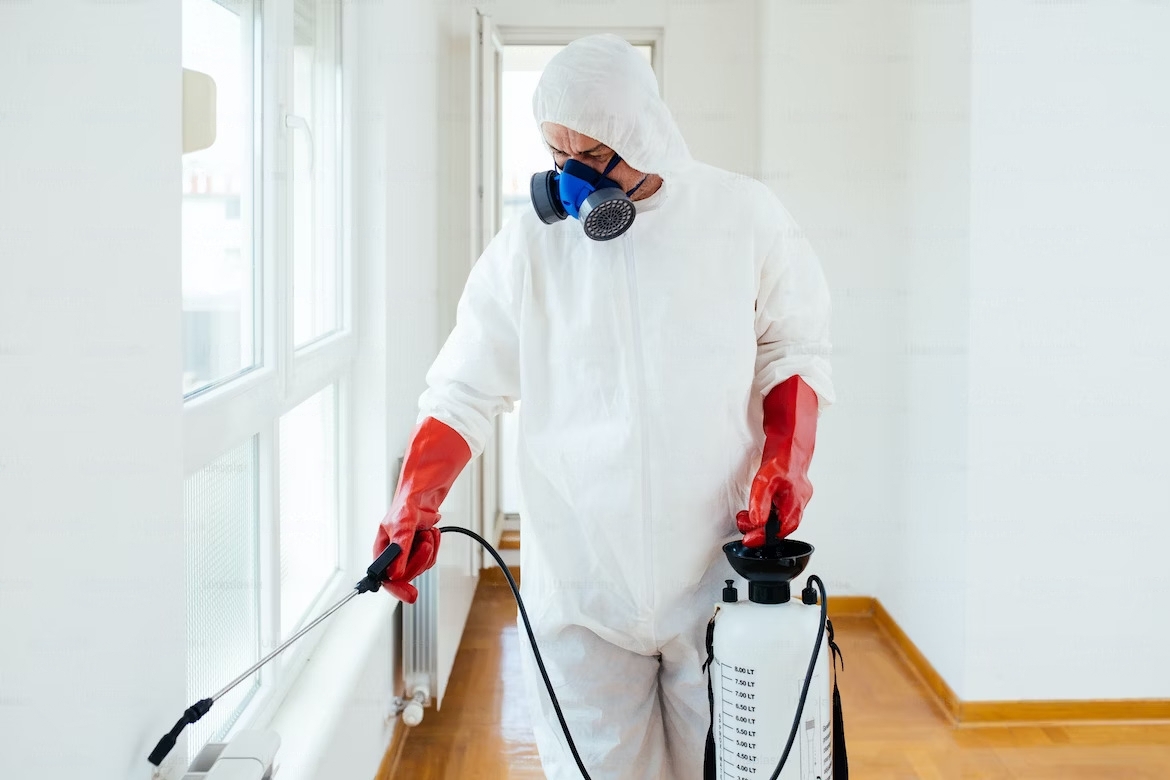Home Improvements
Food Safety and Commercial Pest Control: Ensuring Compliance and Quality

In the bustling world of the food industry, where culinary delights are created and served, the spotlight shines not only on the taste and presentation but also on an often unseen yet vital aspect: pest control. For businesses operating in the food sector, Commercial pest control is more than just a routine task—it’s a critical component of ensuring food safety, hygiene, and compliance with health and safety regulations.
In this blog, we’ll delve into the symbiotic relationship between food safety and commercial pest control, understanding the risks posed by pests and the paramount role pest management plays in upholding quality and standards.
The Unseen Threats
In the fast-paced world of the food industry, where culinary creations are meticulously crafted and served to eager customers, a hidden menace often lurks beneath the surface.
This menace comes in the form of pests—creatures that can infiltrate food establishments with surprising ease, jeopardizing the very essence of food safety, hygiene, and quality.
From rodents to insects and flying nuisances, pests are unwelcome guests that seek refuge in the inviting environment of commercial kitchens and storage areas.
Once they find their way inside, these seemingly innocuous intruders unleash a host of threats that can have far-reaching consequences.
Contamination
Among the most alarming dangers posed by pests in the food industry is their potential to contaminate.
Pests, unwitting carriers of bacteria and pathogens, can deposit these harmful microorganisms on various surfaces, ingredients, and ultimately, the food products themselves. This contamination can occur through contact with their bodies, feces, or urine.
The gravity of contamination cannot be overstated. Pests have been known to harbor notorious pathogens such as Salmonella, E. coli, and Listeria.
The mere presence of these microorganisms in food products can lead to outbreaks of foodborne diseases, triggering regulatory investigations, legal repercussions, and devastating consequences for the affected individuals.
Product Damage
While the threat of contamination is a substantial concern, pests also wreak havoc through their destructive behavior. Pests have an innate inclination to gnaw and chew on a variety of materials, including packaging materials.
This behavior, driven by their need to constantly file down their teeth, can result in significant damage to goods and packaging.
Picture this: pests gnawing their way through packaging materials, rendering products unsellable and exposing them to dirt, dust, and potential contamination.
The economic implications are twofold. Businesses suffer financial losses from unsellable products, and the time and effort invested in producing those products go to waste.
Reputation Damage
In the era of social media and instant communication, news travels at the speed of a click. For businesses in the food industry, news of a pest infestation can spread like wildfire through word of mouth and online platforms.
A single sighting of a rodent or insect can be captured on a smartphone and shared with the world within seconds. The consequences? A tarnished reputation and eroded customer trust.
In an industry where consumers place a premium on food safety and quality, even the mere perception of a pest problem can be detrimental.
Customers who once frequented a restaurant or purchased products may hesitate or even choose to avoid the establishment altogether. The damage to reputation is not only financial but also emotional, as businesses work diligently to regain the trust of their patrons.
Compliance with Health and Safety Regulations
In the food industry, adherence to health and safety regulations isn’t a choice—it’s an obligation.
Regulatory bodies like the Food Standards Agency (FSA) in the UK and the Food and Drug Administration (FDA) in the US have established stringent guidelines to ensure food safety. Commercial establishments must maintain a high level of cleanliness and implement measures to prevent pest infestations.
The Role of Commercial Pest Control
This is where commercial pest control in Brooklyn steps in as a guardian of food safety and quality. Professional pest control providers are equipped with the expertise and tools to create comprehensive pest management plans tailored to each food establishment’s unique needs.
Inspections and Prevention
Commercial pest control begins with thorough inspections to identify potential entry points, breeding sites, and areas vulnerable to infestations.
Preventive measures, such as sealing cracks, cleaning hidden corners, and implementing proper waste disposal practices, are integral to keeping pests at bay.
Integrated Pest Management (IPM)
IPM focuses on long-term pest prevention rather than solely relying on pesticides. It includes strategies like habitat modification, pest exclusion, sanitation, and ongoing monitoring.
Regular Monitoring and Maintenance
A one-time treatment isn’t sufficient. Professional pest control involves regular monitoring to detect early signs of infestations and taking swift action before pests proliferate.
In the realm of the food industry, where quality and safety are paramount, the collaboration between food safety and commercial pest control in Brooklyn is non-negotiable.
Protecting customers from the dangers of contaminated food and upholding a reputation of excellence go hand in hand with effective pest management practices.


